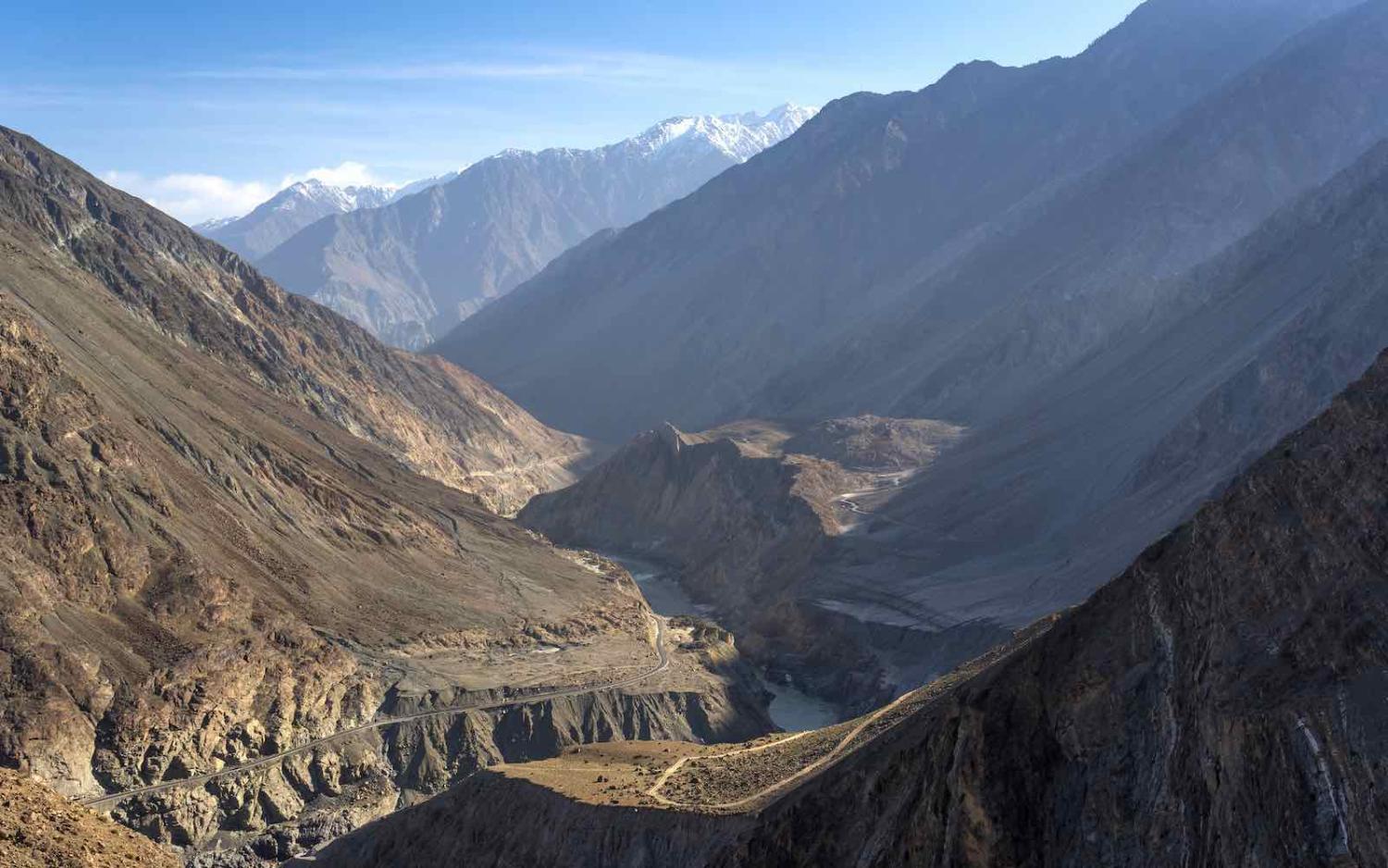Over the last decade, the demand to build a new mega-dam intensified in Pakistan. The proposed Diamer-Bhasha dam, 320 kilometres from the border with China in the north, was an obvious choice, because all provincial governments agreed to its location. At 272 metres high, it would be the highest roller compacted concrete dam in the world, and would provide power generation, water storage and flood control.
With a struggling economy, Pakistan knocked on the doors of the World Bank, the Asian Development Bank and even Western allies for financial help. All refused to finance the project, due to the opposition of India – the dam site is located in the wider Kashmir region, disputed territory between India and Pakistan. In June 2018, Pakistan’s top judge surprised many when he ordered a crowdfunding campaign be started to build the Diamer-Bhasha dam.
Fast-forward to July 2020, and the crowdfunding effort has fallen short of its target. It has managed to collect around Rs12 billion (A$103 million), far below the estimated US$14 billion (A$20.6 billion) cost of the Diamer-Bhasha dam. This means the patriotic drive created by the government to encourage Pakistanis to donate to the dam fund largely failed.
This might have been the end of the project, but then China stepped in.
Diplomatic opposition from India will not go away anytime soon, and New Delhi will likely use every possible diplomatic option to disrupt the project.
In May this year, Pakistan awarded the contract for building the dam to a joint venture of Power Construction Corporation of China and the Frontier Works Organization of Pakistan. It is now clear that the contract was awarded once China had agreed to lend money for the project.
This may be great news for Pakistan, because it appears the mega dam will finally be built, but the project still faces obstacles.
Three factors loom as major problems that could jeopardise the project. The first is a dispute over the total cost of construction. Prior to awarding the contract, Pakistan’s Water and Power Development Authority (WAPDA) had always claimed the total cost of the dam to be $14 billion. After the signing ceremony for the contract, WAPDA claimed it would be only Rs1,406 billion (A$12 billion). Even accounting for fluctuation in the value of the Pakistani rupee, this 37% decrease in total cost is not possible.
The only logical explanation, therefore, is that WAPDA is downscaling the cost of the project so that they can show the public they have the required funds to complete it, which does not seem to be the case. In the budget for the fiscal year 2020–21, Pakistan has only allocated Rs61 billion (A$523 million), which only makes up 2.6% of the original estimated cost of the dam, suggesting Pakistan is still short of financial resources to build the dam, despite a loan agreed by China.
The second factor is diplomatic opposition by India. As one Indian analyst describes it, the project is a “logical outcome of China’s intention to further consolidate its economic partnership with Pakistan”, and an attempt by China to take advantage of geopolitical possibilities generated by the pandemic. It is for this reason that immediately after the signing of the construction contract, India's Ministry of External Affairs issued a strongly worded statement against the project. India considers it an infringement of its territorial sovereignty.
Pakistan and China both reject India’s position and have decided to move on with construction. Diplomatic opposition from India will not go away anytime soon, however, and New Delhi will likely use every possible diplomatic option to disrupt the project.
The third factor which could potentially impede progress of the dam is opposition by the indigenous people of Gilgit Baltistan, where the dam site is located. Diamer-Bhasha Dam Affectees Action Committee, a group representing the people forcibly displaced by the dam construction, is demanding Rs15 billion (A$130 million) in compensation, which the government has refused to pay. There is also a dispute between the Harban tribe of Kohistan and Thor tribe of Diamer over part of the land which will be used for the dam.
To further complicate matters, residents are also protesting the destruction of historical Buddhist sculptures, inscriptions and petroglyphs in 50 villages, which will be submerged once the dam is in use. While the government has announced a fund of Rs78 billion (A$670 million) “for the welfare of the people of Diamer-Bhasha”, local communities will find it hard to believe such a claim, given the economic plight of the country, and such protests are likely to continue.
With the dam’s potential to generate electricity and irrigate large tracts of land, Islamabad is treating the project as a strategic priority. But these issues – along with the burden of repaying loans to China – may very well make this dam more of a liability than an asset.

